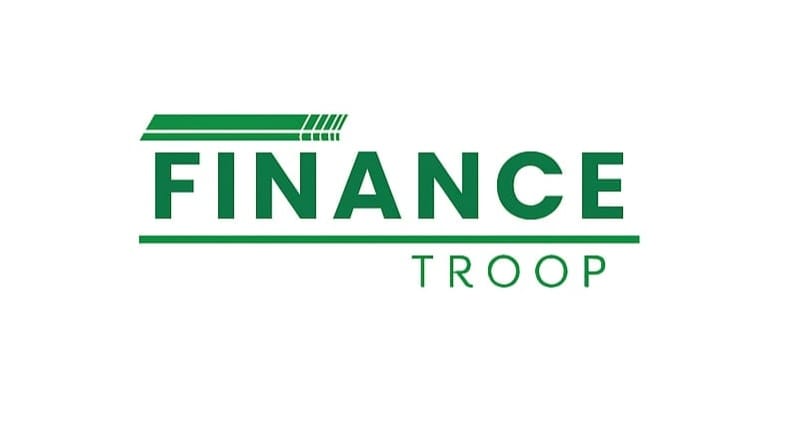Whether you’re planning a wedding, covering medical bills, upgrading your laptop, or dealing with an emergency — you may find yourself stuck choosing between a personal loan and a credit card.
Both offer quick access to credit, but they work very differently. One can help you save on interest — and the other can add to your debt faster than expected if you’re not careful.
In this guide, we’ll break down:
- The main differences between personal loans and credit cards
- Key costs and features in 2025
- Which one is better for specific situations
Let’s help you choose smarter.
What Is a Personal Loan?
A personal loan is an unsecured loan provided by banks, NBFCs, or digital lenders. It’s repaid through fixed monthly EMIs over a defined period (usually 1 to 5 years).
You borrow a specific amount — say ₹2 lakh or ₹5 lakh — and repay with interest, just like a car loan.
These loans are best for:
- Planned expenses with a fixed amount (e.g., home repair, medical surgery)
- Situations where you need lump sum funds quickly
No collateral is needed, but you must meet eligibility and credit score requirements.
What Is a Credit Card?
A credit card gives you access to a revolving line of credit. You can spend up to your credit limit (say ₹1 lakh), and you pay interest only on the amount used — not the full limit.
If you repay the full amount on time, you pay no interest. But if you carry forward the balance, interest charges apply, often at higher rates than personal loans.
Credit cards are ideal when:
- You want flexible access to short-term borrowing
- You make daily or monthly payments that are easy to clear
- You want rewards, cashback, or EMI conversions on big purchases
Personal Loan vs Credit Card – Comparison Table (2025)
Feature | Personal Loan | Credit Card |
Loan Type | Fixed, lump-sum loan with a set repayment term | Revolving credit; pay as you spend |
Repayment Style | Fixed monthly EMIs | Pay full or minimum due monthly |
Interest Rate (2025) | 10% – 18% per annum | 30% – 42% per annum (on carried balance) |
Credit Limit | Based on income & credit score (₹50K – ₹25L+) | Pre-approved credit limit (can go up to ₹10L+) |
Uses Best For | Weddings, debt consolidation, large one-time needs | Emergency spending, daily expenses, travel, rewards |
Approval Time | 1–5 days (24 hrs for digital lenders) | Pre-approved, instant usage once card is active |
Documents Required | Income proof, PAN, Aadhaar, bank statements | Basic KYC + income proof (faster if pre-approved) |
Default Consequences | Affects credit score, legal notice on default | Heavy interest, late payment fee + credit damage |
When Should You Choose a Personal Loan?
Here are cases when a personal loan is usually a better option:
1. You Need a Large Amount at Once
For example, if you need ₹2–3 lakh for a family medical emergency, credit cards won’t be enough. A loan will give you structured repayment at lower interest.
2. You’re Paying Off Existing Credit Card Debt
If you already have ₹1.5 lakh in unpaid credit card bills, taking a personal loan at 12% interest to pay off 36% credit card debt is a smart move. This is called “debt consolidation.”
3. You Want Predictable EMIs
A personal loan has fixed EMIs — nothing fluctuates. It’s ideal if you want budgeting stability.
When Should You Use a Credit Card?
Sometimes, a credit card is the smarter tool:
1. You Can Repay in Full Within 30–45 Days
If you’re buying a ₹15,000 phone and can repay it fully next payday — a credit card can give you a 0% interest loan for 30–45 days.
2. You Want Cashback, Points, or Lounge Access
Credit cards offer reward points, travel benefits, fuel discounts, and EMI conversions. These add value if used properly.
3. You Want a Safety Net, Not a Loan
For working professionals, a credit card acts like emergency backup — use it only during urgent cash shortfalls and repay quickly.
Cost Comparison Example
Let’s say you borrow ₹50,000 in January 2025 on both tools:
- Personal Loan @ 13% for 1 year
→ Monthly EMI ~ ₹4,500
→ Total interest paid ~ ₹4,000 - Credit Card (missed full payment, paid minimum)
→ Interest @ 3% monthly = ₹1,500/month
→ 12-month interest = ₹18,000+ + late fees
Using credit cards for long-term borrowing is almost always more expensive if you don’t repay the full amount quickly.
Do Personal Loans Hurt Credit Score More?
Both credit cards and personal loans impact your CIBIL score, depending on how you use them:
- Credit cards: Keep usage under 30% of limit, pay full due — your score goes up
- Personal loans: Paying EMIs on time improves your profile, but too many loans look bad
Mistimed payments hurt you either way.
It’s not about which option is worse, it’s about how responsibly you repay.
Quick Warnings
Avoid credit cards if:
- You often spend beyond your control
- You only pay the minimum due monthly
- You don’t track your purchases
Avoid personal loans if:
- You need money for luxury shopping
- You’re not sure how to repay
- You apply at multiple banks (hurts CIBIL with inquiries)
Financial products are tools — not income boosters.
Final Recommendation (Which is Better in 2025?)
There’s no single answer.
Here’s a simple way to decide:
- For structured, large, one-time needs (₹1+ lakh): Choose a personal loan
- For short-term, repay-next-month purchases: Use a credit card wisely
- If your CIBIL is low, credit builder cards (secured) or small personal loans can help rebuild it
If your goal is stability and control — choose fixed repayment.
If you seek convenience, cashback, and spend tracking — choose credit cards.
But whichever tool you pick, remember: borrow only what you can repay.
Frequently Asked Questions:
1. What is the difference between a personal loan and a credit card loan?
Answer:
A personal loan offers a lump sum of ₹50,000 to ₹20+ lakh for fixed monthly EMIs over 1–7 years, with lower interest (~10–17% p.a.). A credit card loan offers quick access to short-term funds within your credit limit, but interest is much higher (24–42% p.a.), unless converted to EMI. Choose based on your loan amount, urgency, and duration.
2. Which has lower interest rate – personal loan or credit card?
Answer:
Personal loans have significantly lower interest rates in India compared to credit cards. In 2025, personal loan rates start around 10.25%, while unconverted credit card balances can be charged up to 42% annually. For big-ticket items or longer repayment, a personal loan is more economical.
Source: SBI, HDFC, Axis, and RBI financial disclosures (2024–2025)
3. Is it okay to pay credit card dues using a personal loan?
Answer:
Yes, using a low-interest personal loan to clear high-interest credit card dues is a popular strategy called debt consolidation. It helps reduce total interest burden and offers a structured EMI repayment plan. However, ensure you don’t fall back into using the credit card again without planning.
4. Can I convert credit card transactions into EMI like a personal loan?
Answer:
Yes. Most major credit card providers like ICICI, HDFC, SBI, and Axis Bank allow you to convert eligible transactions (usually above ₹3,000) into EMIs at 13–18% p.a., with fixed tenure. While this is cheaper than card interest (30–40%), it’s still costlier than most personal loans.
5. Which is better for a salary person – credit card or personal loan?
Answer:
If you’re salaried and need ₹10,000–₹50,000 for short-term spending, a credit card with EMI offers is convenient. But for larger funds (₹1L+), like medical emergencies or wedding expenses, a personal loan is better due to lower interest and flexible repayment.
6. What are the risks of using a credit card instead of a personal loan?
Answer:
Credit cards are convenient but risky if not used wisely. If you don’t pay the full amount due, high interest (2–3.5% monthly) and late payment fees apply. It can damage your CIBIL score and cause long-term debt buildup. Personal loans have stricter structure and better control.
7. Are personal loans easier to get than credit cards?
Answer:
Not always. Personal loans require proper income and credit score checks. If you already have a credit card, banks may give you instant top-up or cash advances faster than issuing a fresh personal loan. However, the loan amount is limited to your approved card limit.
8. How do repayment options differ between credit card EMIs and personal loans?
Answer:
- Personal Loans → fixed EMI, tenure chosen in advance (1–5 years)
- Credit Card EMI → optional conversion of purchases (3–24 months), interest based on bank offers
Credit card EMIs also offer flexible pre-closure but may charge a fee. Personal loans sometimes have lock-in periods (6–12 months).
9. Do credit cards or personal loans affect credit score?
Answer:
Both affect your credit score—but with differences:
- Using more than 30–40% of your card limit hurts your CIBIL
- Paying only minimum due builds costly debt
- Personal loan EMI defaults hit your score harder but are easier to avoid via structured repayment
Proper repayment helps build strong credit history on both.
Must-Know Tips Before Borrowing
- Keep CIBIL score above 750 for best rates
- Use less than 50% of credit card limit to avoid score drop
- Avoid “minimum due” trap on credit cards—interest still applies
- Use bank/NBFC EMI calculators before applying
Final Verdict: Which is Better in 2025?
Scenario | Best Option |
₹20,000 urgent medical expense | Credit Card EMI |
₹2L+ wedding gift/renovation/remodel | Personal Loan |
Need cashback/rewards/deals | Credit Card |
Want fixed EMI, low interest | Personal Loan |
Each has its place. It’s not either/or—it’s about choosing based on your need and financial control.




